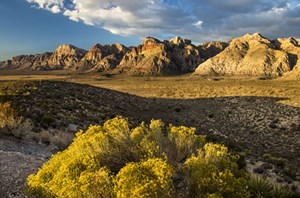“Even if we get to net zero,” claimed John Kerry, President Biden’s Special Presidential Envoy for Climate, “we still have to get carbon dioxide out of the atmosphere… It will require mobilizing finance at an absolutely unprecedented level.” Proof that stupid can still get
rich, Fig. 1.

A reader for policymakers. Exploration—the process of finding. We ask, “What is that over there?” We explore because of curiosity, survival and necessity. If I find something, how useful is it? Pyrite or gold? Salt water or oil? How much of it is there? How exclusive is it? Give it up to others or endure a war?
Production—how can the treasure be optimized? As competition increases and value rises, how to efficiently find more? Aware that the resource is very limited, my finding is how to get more out of what I have. I work to create demand, to keep value up, to pay high fixed costs.
Consumers—Plastic lasts longer than most wooden objects. It’s easier to work with than cement or ceramic. But how to dispose of it? Recycle from apartments in the city, of course. We want more objects, we want them free, we want them delivered quickly.
Woke—I demand stopping the exploration for more material to make or deliver my desires. Don’t cut any more trees, either. The steak I bought has nothing to do with cows, and how terrible cows are at causing global warming.
Meanwhile, professional organizations align political statements with no regret:
“SEG has joined nearly 200 other scientific societies [unnamed] worldwide in affirming the position of the Intergovernmental Panel on Climate Change that has concluded that anthropogenic greenhouse gas emissions are likely to be the dominant cause of observed climate warming since 1950.” SEG.org, (2021). Included, “The Earth is continuously undergoing climate change, but the current rate of increase of both temperature (Diffenbaugh and Field, 2016) and atmospheric CO2 levels (Zeebe et al., 2016) may be unprecedented in the past 66 million years, per currently available data…”
Translation—Politics force technologists to follow the money, due to overwhelming media and political pressure put on member-companies to stop fossil resource development. That is a huge impact on anthropogenic members’ jobs.
Redemption—“SEG’s statement affirms the Society’s support for members engaged in geophysical research, publication and open dialog on climate change and its impacts.” Maybe.
Global offshore hydrocarbon project commitments are expected to reach a record level of 592 over the next five years, a Rystad Energy report says. Yet, in April, rollbacks of Trump policy toward E&P in the Gulf signal “investor beware.”
Fracing is my favorite “F” word; I have accepted the 14-truck mantra on my well pad, as well as amazing driver skills, and the frac cost on an AFE, but pressure testing technology is non-directional. It has not helped to find poro-perm lineations in either well control or 3D seismic. Scaling down frac zones helps, but it also increases cost. Think a vertical, with 12 zones over 2,000 ft, to 27 fracs over 12,000 horizontal ft. That is a lot of information to work through, interpret and relocate assets for the next dig. I really could use more detailed and better scalar-to-vector analysis of pressure data. I will have to wait on true directionality.
Clarkson et al. recently proposed a modified DFIT to accelerate the time to reach closure pressure and derived reservoir information. Dr. Chris Clarkson calls the new test DFIT-FBA. According to Clarkson, the procedure entails a sequence of pump-in/flowback, where reservoir information is obtained from flowback data using classic rate-transient analysis (RTA) methods. His initial field trials indicate DFIT-FBA can be used to obtain reservoir pressure in typically less than 2 hr, in contrast to days for conventional DFITs. That is a big wow, if the information is as claimed.
Clarkson offers a webinar comparing advantages/disadvantages of traditional frac tests to DFIT-FBA. He caught my attention when discussing the use of DFIT-FBA for selecting targets for horizontal wells in an exploration program. Perhaps the method will assist in characterizing rock property-to fluid variability in long horizontal wells.

The whole of us ARE on an uncharted course, that we must ride on, or ride out, Fig. 2.

- Shale technology: Bayesian variable pressure decline-curve analysis for shale gas wells (March 2024)
- Executive viewpoint: TRRC opinion: Special interest groups are killing jobs to save their own (February 2024)
- U.S. oil and natural gas production hits record highs (February 2024)
- When electric meets intelligence: Powering a new era in hydraulic fracturing (January 2024)
- Next-generation electric fracturing system improves efficiency, ESG performance (January 2024)
- Management issues: New U.S. House Speaker is strong supporter of oil and gas industry (December 2023)
- Applying ultra-deep LWD resistivity technology successfully in a SAGD operation (May 2019)
- Adoption of wireless intelligent completions advances (May 2019)
- Majors double down as takeaway crunch eases (April 2019)
- What’s new in well logging and formation evaluation (April 2019)
- Qualification of a 20,000-psi subsea BOP: A collaborative approach (February 2019)
- ConocoPhillips’ Greg Leveille sees rapid trajectory of technical advancement continuing (February 2019)


